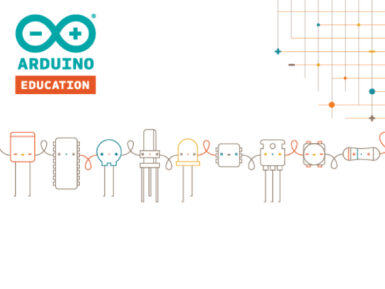
Arduino MKR Mem Shield
Are you developing a complex IoT device with your MKR board and running out of memory? Add Flash memory and microSD storage to your MKR board, and allow over-the-air updates, with the Arduino MKR MEM Shield.
Overview
The Arduino MKR MEM shield will allow you to add more flash memory and storage. It provides 2-megabytes of flash memory. It also includes a slot for adding a microSD card to store several gigabytes of storage. This can allow you to store data for later analysis.
Tech specs
| Interface | SPI |
| Micro SD Card Slot | 1 |
| Micro SD Card | Not Included |
| SPI Flash Memory | 2 MB |
| Circuit Operating Voltage | 3.3 V |
| Compatibility | MKR |
Conformities
Resources for Safety and Products
Manufacturer Information
The production information includes the address and related details of the product manufacturer.
Arduino S.r.l.
Via Andrea Appiani, 25
Monza, MB, IT, 20900
https://www.arduino.cc/
Responsible Person in the EU
An EU-based economic operator who ensures the product's compliance with the required regulations.
Arduino S.r.l.
Via Andrea Appiani, 25
Monza, MB, IT, 20900
Phone: +39 0113157477
Email: support@arduino.cc
Documentation
OSH: Schematics
The Arduino MKR Mem Shield is open-source hardware! You can build your own board using the following files:
EAGLE FILES IN .ZIP SCHEMATICS IN .PDFClick to download the official datasheet of the W25Q16 memory chip.
Learn more
Get Inspired

How Arduino Education helped educator James Jones boost students’ 21st century skills and robotics knowledge across 23 middle schools in Orlando, Florida. More and more teachers face the difficulty of instilling the right skills and knowledge, as well as a flexible mindset, that better prepare their students for future career opportunities. “Today, students need to be thinking about careers in middle school,” Jones said. “If students wait until they are juniors or seniors in high school to decide, their options are already getting slim. Finding a direction in middle school allows for research, job shadowing, and internships in high school. This will translate into more jobs that require more of these skills as part of the daily workplace. This way they know what a career really looks like, instead of jumping into a job and finding out that they are miserable.” The challenge: learning about careers you love at a young age Many countries have recently approved changes in their curricula and education systems to allow earlier access to technology in the classroom. In Finland, technology education is not a separate subject but a cross-curricular, interdisciplinary topic studied within various classes. In Florida, the Workforce Education law requires that students explore their career options during grades 6-8, at ages 12 to 14. How Arduino Education helped Jones spent last summer looking for a solution to assist him the following semester. He wanted to think big and reach as many schools as possible in Orange County, so he applied for and won the Title IV grant through the Every Student Succeeds Act (ESSA) program. He used the grant to fund 23 middle schools and chose Arduino Education’s products, CTC GO! Core Module and the Arduino Starter Kit, to improve students’ robotics, programming, and coding skills. “This past summer we ran two weeks of camps for rising eighth-graders. It was a transition camp at our feeder high school,"







